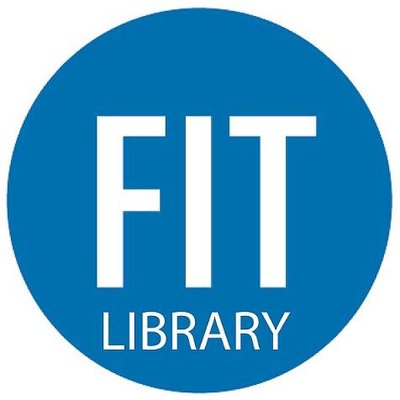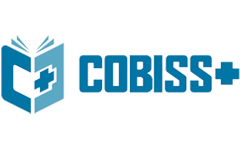Prolonged Neuromuscular Block Due to DrugDrug Interaction in a Post-Chemotherapy Patient Posted for Septoplasty: A Case Report
DOI:
https://doi.org/10.61841/yazs7154Keywords:
chemotherapy, cyclophosphamide induced pseudocholinesterase deficiency, succinylcholine, delayed recovery, drug-drug interactionsAbstract
Introduction- It is not uncommon to encounter cancer patients who have been subjected to chemotherapy being planned for non-oncological surgery. Chemotherapeutic drugs stimulate a cascade of catastrophic events leading to apoptosis via drug-receptor interaction. We are presenting a case report on one such side-effect missed on the pre-operative assessment that led to prolonged recovery phase in a patient posted for septoplasty under general anesthesia.
Case Report: A 62-year-old female planned for septoplasty had been on chemotherapeutic treatment for unilateral breast cancer stage 2. Drug-related toxicities were ruled out, and general anesthesia was planned. Premedication in the form of injection glycopyrrolate 0.005 mg/kg and fentanyl 1 microgram/kg; induction by injection propofol (total 90 mg); and succinylcholine 1.5 mg/kg. After securing ETT, maintenance was achieved with isoflurane and N20:O2 (50:50) with vecuronium used as NDMR. Post-cessation of surgery, which lasted for 1 hour 40 minutes, inhalational gases were stopped, but the patient remained deeply sedated and hypotonic despite reversal with neostigmine for 45 minutes. Thereafter, her eye opening returned, but her tachypnoea persisted, so she was bridged to BiPAP mode in the ICU till she regained muscle tone and distress subsided, which took around 2 hours. This delayed muscular recovery was thought to be due to cyclophosphamide-induced pseudocholinesterase inhibition, which caused the action of succinylcholine to be prolonged.
Conclusion: Chemotherapeutic agents and their drug-drug interactions must be kept in mind while formulating plans of anesthesia for cancer patients undergoing surgery for general indications.
Downloads
References
1. Fuzaylov G, Kim AH, Rosow CE. Delayed awakening from general anesthesia in a hypovolemic infant. Paediatr Anaesth.2005;15: 435-36.
2. Deuri A, Goswami D, Samplay M, Das J. Nonawakening following general anaesthesia after ventriculoperitoneal shunt surgery: An acute presentation of intracerebral haemorrhage. Indian J Anaesth.2010;54:569–71.
3. Aitkenhead AR, Rowbotham DJ, Smith G, editors. Textbook of Anaesthesia. 2001. 4th ed. London, England: Churchill Livingston
4. More P, Laheri W, Waigankar T, Wagh C. Delayed recovery from anaesthesia in a patient with optimised hypothyroidism and incidental hypokalaemia.JClinDiagnRes.2015;9(1):UD06-07.
5. Baillard C, Clec'h C, Catineau J et al. Postoperative residual neuromuscular block: a survey of management. Br J Anaesth.2005;95:622-26.
6. Hayes AH, Mirakhur RK, Breslin DS, Reid JE, McCourt KC. Postoperative residual block after intermediate-acting neuromuscular blocking drugs. Anaesthesia.2001;56:312-18.
7. Debaene B, Plaud B, Dilly MP, Donati F. Residual paralysis in the PACU after a single intubating dose of nondepolarizing muscle relaxant with an intermediate duration of action. Anesthesiology.2003;98:1042-48.
8. Murphy GS, Szokol JW, Marymont JH, Franklin M, Avram MJ, Vender JS. Residual paralysis at the time of tracheal extubation.Anesth Analg.2005;100:1840-45.
9. Srivastava A, Hunter JM. Reversal of neuromuscular block. Br J Anaesth.2009;103:115-29.
10. Koseoglu V, Chiang J, Chan KW. Acquired pseudocholinesterase deficiency after high-dose cyclophosphamide. Bone Marrow Transplant. 1999;24(12):1367-68.
11. Misal U.S. Delayed recovery from anesthesia: A postgraduate educational review. Anesth Essays Res. 2016;10(2):164-72.
12. Zencirci B. Pseudocholinesterase enzyme deficiency: a case series and review of literature. Cases Journal. 2009;2:9148.
13. Somers R, Jacquemyn Y, Sermues L, Vercauteren M. Corrected Scoliosis, Cholinesterase Deficiency, and Cesarean Section: A Case Report. Case Reports in Medicine. 2009:957479.
14. Robertson G.S. Serum cholinesterase deficiency in pregnancy. BrJAnaesth.1966;38:361-69.
15. Lurie S, Sadan O, Oron G et al. Reduced pseudocholinesterase activity in patients with HELLP syndrome. Reproduction Science.2007;14:192-96.
Downloads
Published
Issue
Section
License
Copyright (c) 2020 AUTHOR

This work is licensed under a Creative Commons Attribution 4.0 International License.
You are free to:
- Share — copy and redistribute the material in any medium or format for any purpose, even commercially.
- Adapt — remix, transform, and build upon the material for any purpose, even commercially.
- The licensor cannot revoke these freedoms as long as you follow the license terms.
Under the following terms:
- Attribution — You must give appropriate credit , provide a link to the license, and indicate if changes were made . You may do so in any reasonable manner, but not in any way that suggests the licensor endorses you or your use.
- No additional restrictions — You may not apply legal terms or technological measures that legally restrict others from doing anything the license permits.
Notices:
You do not have to comply with the license for elements of the material in the public domain or where your use is permitted by an applicable exception or limitation .
No warranties are given. The license may not give you all of the permissions necessary for your intended use. For example, other rights such as publicity, privacy, or moral rights may limit how you use the material.
















